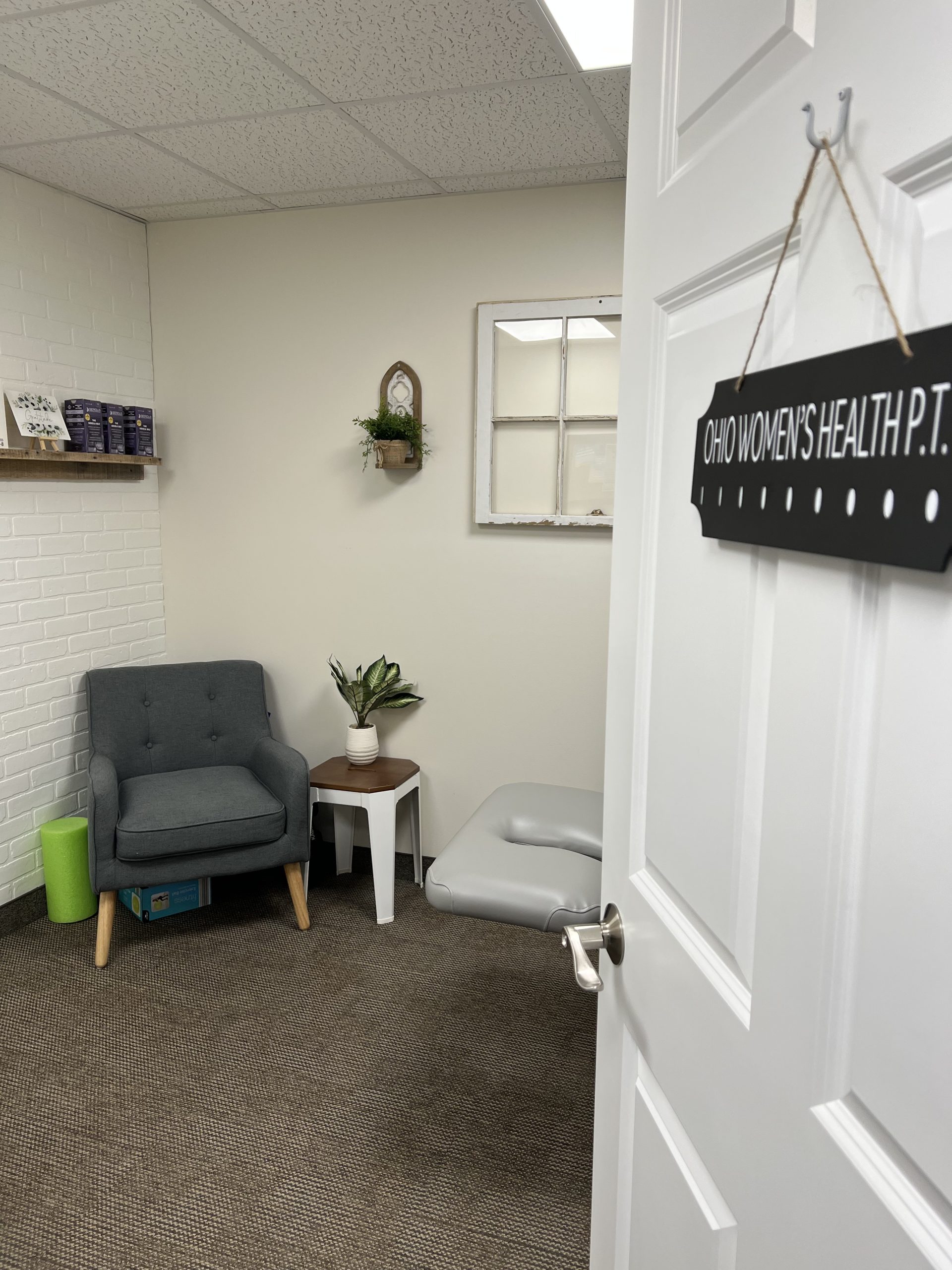I’ve had some questions and wanted to take some time to share what an evaluation looks like when you come into Ohio Women’s Health Physical Therapy.
While not required, many of my clients schedule a complimentary curiosity call prior to actually booking an evaluation. This gives us a chance to briefly discuss the issues/concerns at hand and see if pelvic floor therapy is the way to go. If that is the case, an evaluation is booked.
 When you arrive for your visit, you will come up to my private treatment room. Evaluations are typically somewhere between 75-90 minutes because I really believe this is an important time to get your story and not feel rushed in starting to put the pieces of the puzzle together, but also find that this story continues to evolve with each visit.
When you arrive for your visit, you will come up to my private treatment room. Evaluations are typically somewhere between 75-90 minutes because I really believe this is an important time to get your story and not feel rushed in starting to put the pieces of the puzzle together, but also find that this story continues to evolve with each visit.
 After we have a good idea of what is going on, I complete a posture/alignment, movement and breath screening which are all important contributors to pelvic floor function and therefore dysfunction.
After we have a good idea of what is going on, I complete a posture/alignment, movement and breath screening which are all important contributors to pelvic floor function and therefore dysfunction.
 Next, we typically will spend some time hands on looking at muscle, fascial or scar tissue restrictions, joint restrictions or any specific areas of imbalance. I use a variety of modality treatment approaches including soft tissue and myofascial release, instrumented assisted soft tissue and myofascial release, cupping, and dry needling with or without stimulation as indicated.
Next, we typically will spend some time hands on looking at muscle, fascial or scar tissue restrictions, joint restrictions or any specific areas of imbalance. I use a variety of modality treatment approaches including soft tissue and myofascial release, instrumented assisted soft tissue and myofascial release, cupping, and dry needling with or without stimulation as indicated.
 The next step is typically an internal pelvic floor exam. While there are some specific instances in which I don’t perform this part, it is less common. The reason is, most other healthcare and wellness providers are not able to provide this type of evaluation and for many people it becomes the missing link in their progression of healing. I do not use any tools such as a speculum. Just like a manual assessment of external muscles and connective tissue, a digital exam of the pelvic floor muscles helps to assess if there is overactivity (or tightness), scar restrictions, tissue sensitivity/reactiveness, and coordination of movement both voluntarily and involuntarily.
The next step is typically an internal pelvic floor exam. While there are some specific instances in which I don’t perform this part, it is less common. The reason is, most other healthcare and wellness providers are not able to provide this type of evaluation and for many people it becomes the missing link in their progression of healing. I do not use any tools such as a speculum. Just like a manual assessment of external muscles and connective tissue, a digital exam of the pelvic floor muscles helps to assess if there is overactivity (or tightness), scar restrictions, tissue sensitivity/reactiveness, and coordination of movement both voluntarily and involuntarily.
 At this point, we have a pretty good understanding of many of the puzzle pieces and spend some time (okay a lot of time) educating. What I find so often is that so many of the issues in my practice stem from a lack of awareness or knowledge of how the pelvic floor connects to the rest of the body functionally. Which is why, my primary goal is education and empowerment for each of my clients to explore and start to understand that connection. When that starts to grow, the pieces of the puzzle really start to come together and ultimately I don’t want my clients dependent on my hands on care but able to connect within and problem solve with the tools I give them during our time together.
At this point, we have a pretty good understanding of many of the puzzle pieces and spend some time (okay a lot of time) educating. What I find so often is that so many of the issues in my practice stem from a lack of awareness or knowledge of how the pelvic floor connects to the rest of the body functionally. Which is why, my primary goal is education and empowerment for each of my clients to explore and start to understand that connection. When that starts to grow, the pieces of the puzzle really start to come together and ultimately I don’t want my clients dependent on my hands on care but able to connect within and problem solve with the tools I give them during our time together.
From here we are typically wrapping up our first session with homework given, a plan of care established and a goal set that we both agree on. One of the biggest questions I get at this point is – how long is this going to take? The honest answer is I don’t know, but typically we start to see some changes within the first few sessions which is why I tend to front load and on average we are seeing good progress within 4-6 visits over around a 6 month period. Again this is an average and in no way a guarantee, plus everyone is going to be a little bit different – why I don’t offer cookie cutter treatment plans.
Have more questions? If you are in Ohio and are interested in a curiosity call you can click here to schedule a call and get started today on your healing journey.
